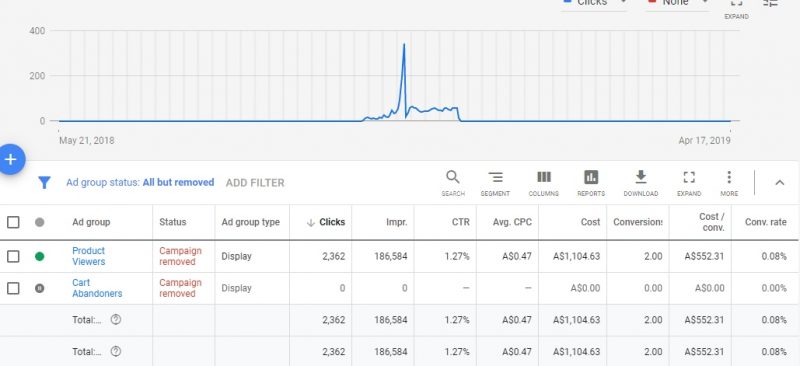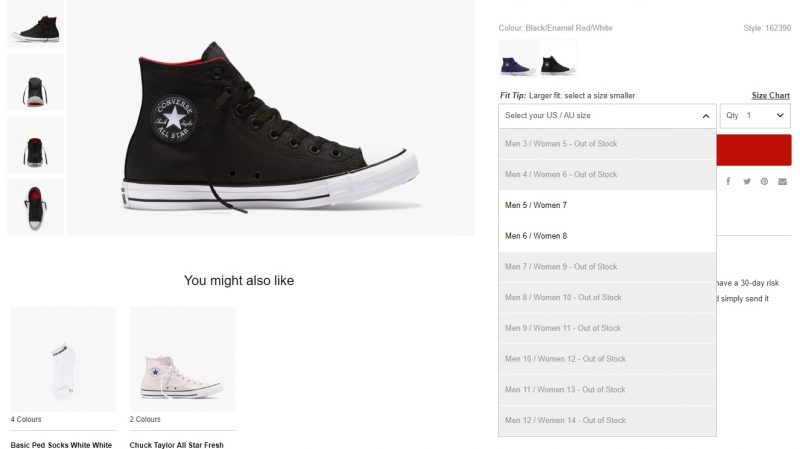I don’t believe dynamic remarketing is a valuable use of a digital advertising budget.
For those not familiar with it; dynamic remarketing is a service offered by Google Ads which allows you to use Google’s display network to show ads to your site’s previous visitors, containing specific products and services that they viewed while on your site. Other platforms like Facebook also offer dynamic remarketing.
Our Google Dynamic Remarketing Experiment
I’m in the pet food business. On paper, this is the exact kind of product category that’s perfectly suited for remarketing: It’s high value, it’s a staple product, and it needs to be re-purchased at a consistent and predicable rate.
We held off investing in remarketing, because my intuition told me it was a waste of money. Our ad agency—an award-winning company with vast Google Ads experience, that we later fired for incompetence—insisted for months that we were making a huge mistake. Eventually, I relented and had them create a dynamic remarketing campaign for one month on a $1,000 budget. I was sceptical that it would work, but I’m always eager to be proved wrong.
I was not proved wrong. Despite the so-called experts insisting that remarketing is an effective use of ad spend, the results were truly abysmal.

Over a thousand dollars of extra ad spend netted only two additional conversions. A $550 cost-per-conversion means we lost over $500 on each order placed. The conversion rate of 0.08 is less than 1/20th of the conversion rate of our Google Shopping and Bing Ads campaigns.
Why doesn’t remarketing work?
Our product category was poorly suited
When people are shopping online for pet food, it means they need pet food now. They’re not going to spend a week deciding which product to purchase—they’d end up with a very dead dog, for one thing.
The main counterargument to this is that the display of the ads should be delayed. ‘Forget the initial purchase, we’ll target the repeat purchase in a month time!’ says the digital marketing expert. The assumption is that a product that supposedly depletes on a consistent basis will actually deplete predictably. It doesn’t. You cannot predict consumer behaviour this accurately without extremely sophisticated targeting, powered by years of data gathered about that specific consumer.
Google Dynamic Remarketing does not have the technical capabilities for that sort of targeting, because fortunately consumer privacy isn’t completely dead (yet).
Continuing with dog food as an example, you run into the following problems: Dogs are all different sizes, people feed inconsistent amounts each day, dogs have inconsistent appetites, people rotate multiple dog foods for variety, people have multiple dogs, dogs die and (obviously) don’t need another bag of food, consumers stockpile food when it’s on sale, etc.
Display advertising is generally ineffective
Remarketing campaigns (generally) run across Google’s Display Network. I’m not going to explain why this is a bad thing, as the worthlessness of display ads is well-established. Others have made that case far better than I ever could:
The technology is flawed
I was shopping for some new Converse shoes a few weeks ago. I found a pair I really like: Black high-tops with a red interior and trim. I didn’t complete my purchase on the Converse website, and their tracking code detected this and decided I needed to be targeted with some dynamic remarketing.

Those shoes followed me around the web for weeks. The problem was, I didn’t abandon my purchase because I was still on the fence, I didn’t buy them because they didn’t have my size in stock. In fact, they only had 20% of possible sizes in stock.
That means, for this particular product, 80% all ad spend on dynamic remarketing is completely wasted. Perhaps and even greater number is wasted when you consider that consumer shoe sizes aren’t evenly distributed.

Over the month I was shown these ads, I clicked them around half a dozen times, hoping that they might have finally received more stock. They never did, so I never bought these shoes, and Converse wasted a decent chunk of money getting me back to their website for no reason. When I did finally buy some shoes (in a physical store), I continued to see the ads for another couple of weeks.
Google’s ad targeting didn’t know why I failed to complete my initial purchase, it didn’t know that their stock levels were completely insufficient to even allow a remarketing campaign in the first place, and it didn’t know when I no longer needed shoes.
Has dynamic remarketing ever worked?
I’ve seen many presenters from marketing agencies (and even Google) stand on a stage and argue about how amazing dynamic remarketing is, but I’m yet to hear of a specific campaign that actually produced good results. Sure, that’s completely anecdotal, but until I’m convinced otherwise by some hard numbers, I won’t be spending another cent on dynamic remarketing.
Has dynamic remarketing worked for your business? I’d love to hear your experiences in the comments below.
